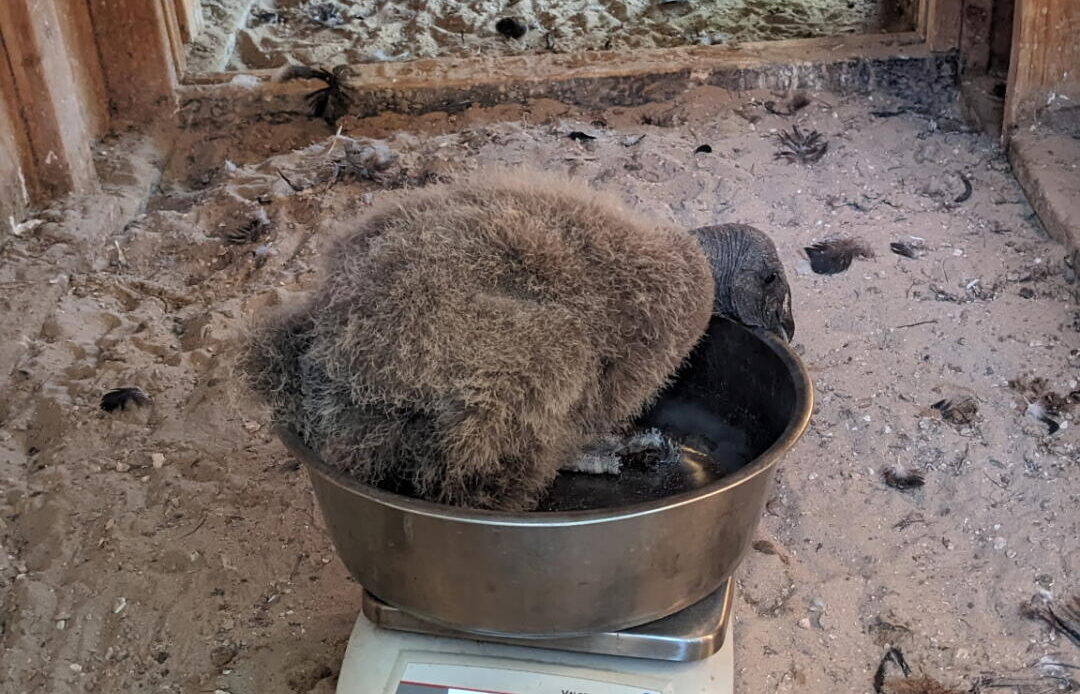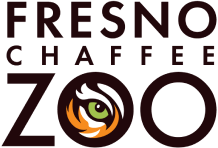
The Andean condor (Vultur gryphus), the world’s largest bird of prey and one of the heaviest birds capable of flight, has been part of the Fresno Chaffee Zoo’s animal population for decades. The Andean condor captivates zoo guests with its impressive wingspan, which can reach up to10.8 feet. These remarkable birds are housed in the Birds of Prey Aviary, next to our King vultures and Red-tailed hawk. The species is managed in AZA as part of a Species Survival Program (SSP) and is considered one of the longest running programs in AZA. Our first pair, Diane and Dino came to us from Patuxent Wildlife Research Center in Laurel, Maryland in the winter of 1989. While they were very close in age, they were still considered too young to breed. Andean condors typically breed when they reach their teenage years. The two maintained a tenuous relationship for 5 years where Diane routinely injured Dino. Ultimately, the SSP Coordinator made the call to send Dino out to Cleveland to be paired with a different mate in 1995. Diane then lived alone for the next 12 years.
In 1994, Ross Laird’s Wings of Wonder Bird Show at the Fresno Chaffee Zoo offered human-assistance rear an Andean condor to be used as part of their ambassador program. The chick was a male named Brando, and in 2007 was introduced to Diane after determining that Brando was not a good candidate for flight programs in the bird show. Andean condors are too large and powerful to be part of a flight program. The two formed a delicate bond after Diane’s pursuits and within a year, they produced their first egg. Over the next eight years, the pair nested and were unsuccessful each time. The eggs were laid and incubated, but Diane would not switch off the nest and let Brando in to sit. Andean condors are not gentle parents when they are incubating eggs, the male and female fight to incubate at times and Brando was more of a gentle soul when it came to confrontation. It became apparent that Brando hadn’t learned the skills needed during his rearing to be the best Andean condor he could be. The SSP found a home for him at the Oklahoma City Zoo and was transferred in 2015.
Later that same year, the SSP identified a young male, Dan who was hatched in 2013 at the White Oak Conservation Center in Yulee, Florida. Dan was a parent-reared Andean condor who should have the necessary skills to hold his own against Diane. As a young condor, Dan was 3 years old when he was introduced to Diane. Throughout the introduction, the two would routinely be found perching close on opposite sides of a shared mesh wall. At times, Diane would display for him with her wings stretched wide and head down, but he was too young to understand and reciprocate. This behavior continued when they were given unprotected access to each other. There were moments of fighting, but Dan stood his ground and proved to be quite the Andean condor.
Over the next 7 years, Dan matured, developing his adult colors and head adornments, and began to court Diane on a regular basis. In May 2020, the pair produced their first egg. Things were different this time around. Dan was more condor-appropriate and made sure that he had many opportunities to participate in incubation. Eggs were laid each year and were incubated but never hatched, and we began to question whether Diane was past reproductive age. Dan continued to court her, but nothing came of it.
In March 2025, the pair nested and laid an egg as they had done for the past 5 years. As usual, the Zoological Care Specialist kept careful track of the egg and presented an image that appeared to be an egg that was cracked and rotten on May 19th. The decision was made to recover the egg to examine whether it was fertile the following day. Early on May 20th, the ZCS team noticed what appeared to be broken shell and surprisingly a freshly hatched chick. This would make Diane one of the oldest females to successfully hatch an egg and Dan one of the youngest males. The parents and chick are monitored by wireless camera 24 hours a day to record the milestones as they are passed. Diane and Dan quickly showed their skill as first time parents feeding the chick, grooming and switching off at different times of the day. Diane has settled in as the overnight caretaker, and Dan runs the day shift. Dan has shown that he isn’t too keen on the camera and has moved it several times. The team was able to move the parents to an adjoining enclosure to perform a brief exam and get a weight of the chick at 7 days old and it was confirmed to be a female. Andean condors are sexually dimorphic at hatching; the males have a small crest or caruncle on their heads which differentiates male from female. The team was happy to report that the little one is on track for an Andean condor at that age. Andean Condor chicks will stay with their parents for about two years and then she will be off to another Zoo to participate in the SSP. If things continue as they have been, we can expect the new condor to be visible in about a month or so. Stop by and see her in all her grey fuzzy glory.

